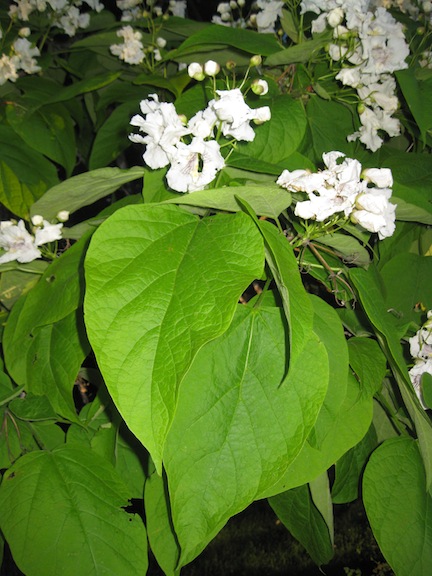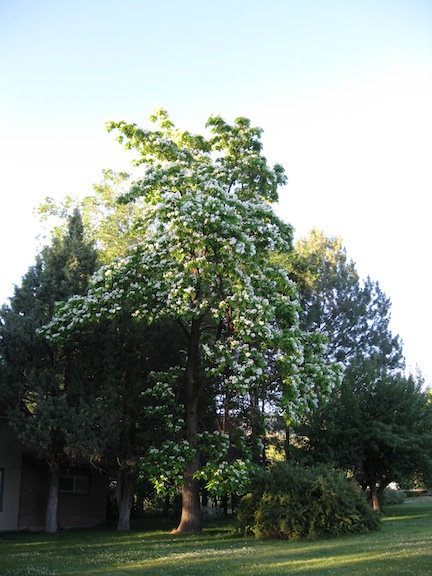| PSC 2620: Woody Trees and Shrub | Course Home | Week 6 |
Catalpa speciosa - Catalpa
Plant Viewer
 |
 |
| The leaf of the Catalpa is exceptionally large (up to one foot in length) and has an attractive bright green color. It has an elongated cordate shape. | White, bell-shaped flowers appear in clusters on the tree. |
 |
 |
| When the tree is in bloom it is real show-stopper and never fails to attract attention. | By summer the tree begins to produce long, narrow seed capsules that grow nearly two feet long. |
Plant Description
Catalpa is a large (40-60 feet high and 20-40 feet wide) and beautiful shade tree that is underutilized in the landscape. It typically has a strong upright form that, at maturity, will tower over the landscapes. The form is very variable, and often the trees end up with a rugged but picturesque form. It deals well with difficult conditions and is adaptable to nearly any soil and moisture condition. It has a fast growth rate and will quickly fill into a spot within a few year's time.
The large leaf is true green to lime green in color almost tropical in its appearance. The leaves can be up to a foot long and have an elongated cordate shape. The large leaves give the tree a very lush and coarse texture. The leaves are often arranged in whorls, but can also be arranged oppositely.
During the early summer, large (2 inch wide or larger) white bell-shaped blossoms appear profusely on the tree. They have a yellow throat with red spots that give them a very tropical look. The flowers form in large panicles held above the leaves. Towards the end of summer, long skinny fruit capsules form on the tree. Theses capsules are stiff and can grow to 20 inches long. They are green during the summer, but turn to brown in the fall and persist into the winter.
Landscape Use
Use as a large shade tree both in a residential and commercial setting. It could be used as a parking strip tree in large parking strips (8 feet or wider), but will buckle sidewalks in smaller ones. It is great selection to use along the edge of a property in combination with other large trees and shrubs to provide seasonal interest.
Points of interest
Dirr is less than enthusiastic about Catalpa, but it is a great performer in our climate and its planting should be encouraged. Leaf spot and wilt can be a problem, particularly on young specimens.